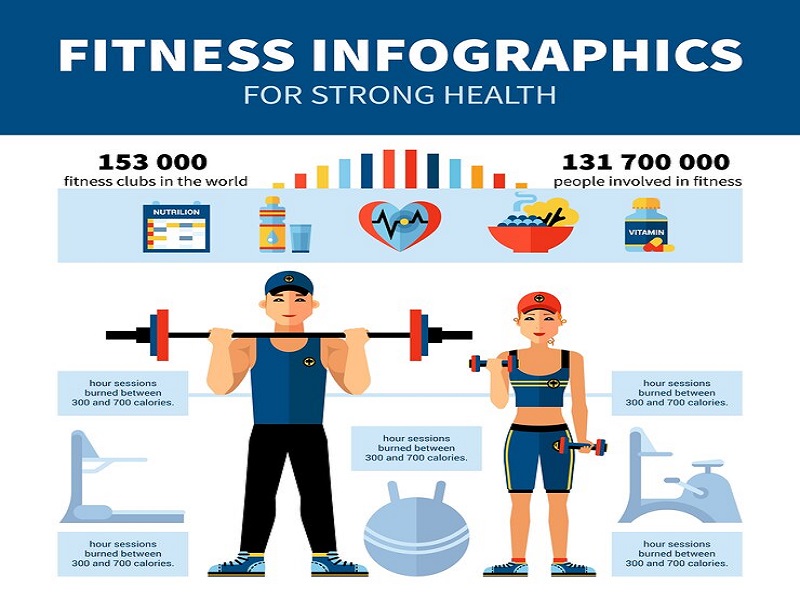Welcome to our comprehensive guide on the FITT principle – a fundamental concept in fitness programming that can help you achieve your health and wellness goals. Whether you’re new to exercise or a seasoned fitness enthusiast, understanding the components of the FITT principle is essential for designing effective workout plans tailored to your needs and preferences. In this blog post, we’ll delve into the intricacies of the FITT principle, explore its application in exercise programming, and provide practical examples to guide you on your fitness journey.
Understanding the FITT Principle
Definition of the FITT Principle
The FITT principle is a widely recognized framework used in exercise science to design and modify fitness programs. FITT stands for Frequency, Intensity, Time, and Type, representing the four essential components of a balanced workout regimen. By manipulating these variables, individuals can tailor their exercise routines to meet specific fitness goals and address individual preferences and needs.
Read More: Unlocking Glute Power: How Elliptical Machines Boost Activation
Frequency
Frequency refers to how often you engage in exercise sessions within a given timeframe, such as per week or day. The appropriate frequency of workouts depends on factors such as fitness level, goals, and available time. For example, beginners may start with two to three sessions per week, while more advanced individuals may aim for four to six sessions.
Intensity
Intensity refers to the level of effort exerted during exercise and can be measured using various methods, including heart rate, perceived exertion, and workload. Increasing the intensity of workouts challenges the body and promotes improvements in cardiovascular fitness, strength, and endurance. Intensity can be adjusted by manipulating factors such as resistance, speed, and duration of exercise.
Time
Time, also known as duration, refers to the length of each exercise session. The appropriate duration of workouts varies depending on factors such as fitness goals, intensity level, and individual preferences. While some workouts may be shorter and more intense, others may be longer and more moderate in intensity. The key is to strike a balance that allows for sufficient stimulus without risking overtraining or burnout.
Applying the FITT Principle to Exercise Programming
Determining the Appropriate Frequency
When designing a workout plan, it’s essential to consider the appropriate frequency of exercise sessions based on individual factors such as fitness level, goals, and lifestyle. Beginners may start with a lower frequency and gradually increase as they progress, while advanced individuals may benefit from more frequent workouts to maintain gains and continue challenging themselves.

Adjusting Intensity Levels
Integrating appropriate intensity levels into your workout plan is crucial for achieving desired outcomes and avoiding plateaus. Intensity can be adjusted by manipulating factors such as resistance, speed, and duration of exercise. Progressively increasing intensity over time through methods such as interval training and progressive overload promotes continual improvements in fitness and performance.
Managing Workout Duration
Finding the right balance in workout duration is essential for optimizing results and preventing overtraining or burnout. While some workouts may be shorter and more intense, others may be longer and more moderate in intensity. It’s essential to listen to your body and adjust workout duration based on individual energy levels, recovery needs, and fitness goals.
Selecting Suitable Types of Exercise
The type of exercise you engage in plays a significant role in shaping your workout plan and achieving specific fitness goals. Whether you prefer cardiovascular activities, strength training, flexibility exercises, or a combination of modalities, it’s essential to incorporate a variety of exercises that target different muscle groups and energy systems. By diversifying your workouts, you can maximize results and maintain motivation and interest over time.
Benefits of Using the FITT Principle
Provides a Structured Framework
The FITT principle provides a structured framework for designing personalized workout plans tailored to individual needs and preferences. By considering the four components – Frequency, Intensity, Time, and Type – individuals can create balanced and effective exercise routines that address specific fitness goals and promote overall health and wellness.
Allows for Progressive Overload
One of the key benefits of the FITT principle is its ability to facilitate progressive overload, a fundamental principle of exercise training. By gradually increasing the Frequency, Intensity, Time, or Type of exercise, individuals can continually challenge their bodies and stimulate adaptations such as muscle growth, cardiovascular endurance, and flexibility.

Helps Prevent Workout Plateaus and Boredom
By incorporating variety into workout plans and adjusting the FITT variables over time, individuals can prevent workout plateaus and boredom. Changing exercise routines keeps workouts fresh and engaging, prevents adaptation to specific stimuli, and promotes continued progress and improvements in fitness and performance.
Promotes Consistency and Adherence
Following a workout plan based on the FITT principle promotes consistency and adherence to exercise routines. By providing structure and guidance, the FITT principle helps individuals stay on track with their fitness goals, maintain motivation, and establish healthy habits for long-term success.
Examples of FITT-Based Workout Plans
Beginner Workout Plan
A beginner workout plan may include two to three sessions per week, focusing on basic exercises and gradually increasing intensity and duration over time. Sample workouts may include a combination of cardiovascular activities, strength training exercises, and flexibility routines tailored to individual needs and preferences.
Intermediate Workout Plan
An intermediate workout plan may involve four to five sessions per week, incorporating higher-intensity workouts and more advanced exercises. Sample workouts may include interval training, circuit training, and targeted strength training routines designed to challenge different muscle groups and improve overall fitness levels.
Advanced Workout Plan
An advanced workout plan may include five to six sessions per week, emphasizing intensity and periodization to maximize performance and results. Sample workouts may include high-intensity interval training (HIIT), plyometric exercises, and advanced strength training techniques aimed at pushing limits and achieving peak fitness levels.
Common Mistakes to Avoid
Overtraining
One common mistake to avoid when applying the FITT principle is overtraining, or exceeding the body’s capacity to recover from exercise. Overtraining can lead to fatigue, injury, and burnout, ultimately hindering progress and performance. It’s essential to listen to your body, prioritize rest and recovery, and gradually increase workout intensity and duration to avoid overtraining.

Neglecting to Adjust Workout Variables
Another common mistake is neglecting to adjust workout variables over time to promote continued progress and adaptation. As fitness levels improve, individuals may need to increase the Frequency, Intensity, Time, or Type of exercise to continue challenging their bodies and stimulating adaptations. Failing to adjust workout variables can result in plateaus and hinder long-term progress.
Focusing Too Heavily on One Component
Lastly, focusing too heavily on one component of the FITT principle at the expense of others can limit the effectiveness of your workout plan. While it’s essential to prioritize individual components based on specific goals and preferences, neglecting other components can lead to imbalances and suboptimal results. It’s crucial to strike a balance and consider all four components when designing exercise programs.
Conclusion
In conclusion, the FITT principle is a valuable tool for designing effective workout plans tailored to individual needs and goals. By understanding and applying the components of the FITT principle – Frequency, Intensity, Time, and Type – individuals can create balanced and personalized exercise routines that promote optimal health, fitness, and well-being. Whether you’re a beginner looking to establish a fitness routine or an advanced athlete seeking to maximize performance, the FITT principle provides a flexible and adaptable framework for achieving success in your fitness journey.
Frequently Asked Questions
The FITT principle is used to design and modify exercise programs by manipulating four key variables: Frequency, Intensity, Time, and Type. By adjusting these variables, individuals can tailor their workouts to meet specific fitness goals and preferences.
The frequency of adjusting your workout routine based on the FITT principle depends on factors such as fitness goals, progress, and individual preferences. It’s generally recommended to reassess and modify your workout routine every four to six weeks to ensure continued progress and adaptation.
Yes, the FITT principle can be applied to various types of exercise, including cardiovascular activities, strength training, flexibility exercises, and sports-specific training. By manipulating the FITT variables, individuals can design workout plans tailored to different fitness goals and preferences.



